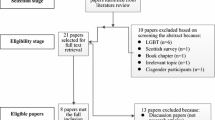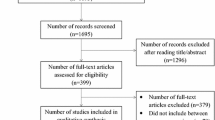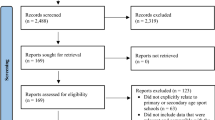Abstract
The NCAA’s purported philosophical justifications for its “Collegiate Model of Athletics” are embedded within its seven stated “Core Values” and “Principles”, which are based on a distribution principle of strict, or radical, equality in which it is believed societal benefit or the “greater good” is achieved if universities can lawfully conspire to compensate all athletes at the same level. From this theoretical perspective, the authors scrutinize two ethical frameworks most often asserted by the National Collegiate Athletic Association (NCAA) to justify exploitation of profit-athletes in the revenue-generating sports of Football Bowl Subdivision (FBS) football and Division I men’s basketball: Classical Utilitarianism and Paternalism. From an analysis of several court rulings over the past 40 years involving challenges to the NCAA’s “amateurism” principles, the authors found, in rulings favoring the NCAA, the judges implicitly supported their decisions utilizing the NCAA’s utilitarian and paternalistic justifications for its Collegiate Model of Athletics. They recommend courts should balance considerations of utilitarianism and paternalism against normative principles of honesty, harm, autonomy, justice, and an adult individual’s fundamental right to maximize economic value and self-worth free of conspiratorial restraints.
Similar content being viewed by others
Notes
We limited our review to cases in which the NCAA’s “amateurism” rules were at issue and, therefore, our analysis excluded cases involving academic rules, breach of contract, Title IX, etc.
According to WISER/NAPSA, “Undue influence is the ‘persuasion, pressure, or influence short of actual force, but stronger than mere advice, that so overpowers the dominated party’s free will or judgment that he or she cannot act intelligently and voluntarily, but acts, instead, subject to the will or purposes of the dominating party’” (2012, p. 2).
The NCAA’s Restitution Rule, Bylaw 19.7, provides: “If a student-athlete who is ineligible under the terms of the constitution, bylaws or other legislation of the Association is permitted to participate in intercollegiate competition contrary to such NCAA legislation but in accordance with the terms of a court restraining order or injunction operative against the institution attended by such student-athlete or against the Association, or both, and said injunction is voluntarily vacated, stayed or reversed or it is finally determined by the courts that injunctive relief is not or was not justified, the Board of Directors may take any one or more of the following actions against such institution in the interest of restitution and fairness to competing institutions: (Revised: 11/1/07 effective 8/1/08)” (list of nine categories of punishments is omitted).
References
Agnew v. NCAA (2012) 683 F.3d 328 (7th cir.)
Banks v. NCAA (1992) 977 F.2d 1081 (7th cir.)
Bloom v. NCAA (2004) 93 P.3d 621 (colo. app.)
Board of Regents v. NCAA (1982) 546 F.Supp. 1276 (W. D. Okla.)
Brand M (2004) Brand address: fortify bond between academics, athletics. NCAA news. http://fs.ncaa.org/Docs/NCAANewsArchive/2004/Associationwide/brand%2baddress%2b%2bfortify%2bbond%2bbetween%2bacademics%2bathletics%2b-%2b1-19-04.html. Accessed 14 September 2015
Brand M (2006) Brand charts course for collegiate model’s next century. NCAA news archives. http://fs.ncaa.org/Docs/NCAANewsArchive/2006/Association-wide/brand+charts+course+for+collegiate+model_s+next+century+-+1-16-06+ncaa+news.html. Accessed 14 September 2015
Brand M (2009) The 2009 NCAA state of the association speech. NCAA news archive. http://fs.ncaa.org/Docs/NCAANewsArchive/2009/Association-wide/the+2009+ncaa+state+of+the+association+speech+-+1-15-09+-+ncaa+news.html. Accessed 14 September 2015
Byers W, Hammer C (1997) Unsportsmanlike conduct: exploiting college athletes. The University of Michigan Press, Ann Arbor, MI
Colorado Seminary (University of Denver) v. NCAA (1978) 417 F.Supp. 885 (D. Colo. 1976), aff’d, 570 F.2d 320 (10th cir.)
Eckard EW (2010) NCAA athlete graduation rates: less than meets the eye. J Sport Manag 24(1):45–58
Gaines v. NCAA, 746 F.Supp. 738 (M.D. Tenn 1990)
Goplerud CP III (1997) Pay for play for college athletes: now, more than ever. South Texas Law Rev 38:1081–1105
Hart v. Electronic Arts (2013) 717 F.3d 141 (3rd cir.)
Hosick M (2014) Student-athletes earn diplomas at record rate: graduation success rate jumps two points, virtually every demographic improves. News articles. http://www.ncaa.org/about/resources/media-center/news/student-athletes-earn-diplomas-record-rate. Accessed 14 September 2015
Hawkins BJ (2010) The new plantation: black athletes, college sports, and predominantly white NCAA institutions. Palgrave Macmillan, New York
In re NCAA (2013) Student-athlete name and likeness licensing litigation, 724 F.3d 1268 (9th cir.)
In re NCAA (2014) Student-athlete name and likeness licensing litigation, 2014 WL 1410451 (N. D. Cal. 11 April 2014)
In re NCAA I-A (2005) Walk-on football players litigation, 398 F.Supp.2d 1144 (W.D. Wash)
Johnson RG (2010) Submarining due process: how the NCAA uses its restitution rule to deprive college athletes of their right of access to the courts…until Oliver v. NCAA. Florida Coastal Law Rev 11(4):459–638
Jones v. NCAA (1975) 392 F.Supp. 295 (D.C. Mass)
Justice v. NCAA (1983) 577 F.Supp. 356 (D. Ariz.)
Karcher RT (2012) Broadcast rights, unjust enrichment, and the student-athlete. Cardozo Law Rev 34(1):107–170
Karcher RT (2014) The battle outside of the courtroom: principles of “amateurism” vs. principles of supply and demand. Miss Sports Law Rev 3(1):47–76
Klein (1987) College football: keeping ‘em barefoot. Wall Street J 13
Korsgaard CM (1993) The reasons we can share: an attack on the distinction between agent-relative and agent-neutral values. Soc Philos Policy 10(1):24–51
Lazaroff DE (2007) The NCAA in its second century: defender of amateurism or antitrust recidivist? Oregon Law Rev 86(2):329–372
Mann JA, Kreyche GF (eds) (1966) Approaches to morality: readings in ethics from classical philosophy to existentialism. Brace & World, Harcourt
Marshall v. ESPN Inc. (2015) WL 3606645 (M.D. Tenn., 8 June 2015)
McCormack v. NCAA (1988) 845 F.2d 1338 (5th cir.)
Mill JS (2001) Utilitarianism. In: Sher G (ed) Hackett, Indianapolis
Mitten MJ (1995) Price competition for elite students and athletes: illusions and realities. South Texas Law Rev 36(1):59–83
Mitten MJ, Davis T (2008) Athlete eligibility requirements and legal protection of sports participation opportunities. Va Sports Entertain Law J 8(1):71–146
National Adult Protection Services Association (NAPSA) (2015) Get informed. Retrieved from http://www.napsa-now.org/get-informed/what-is-abuse/
National Center for Education Statistics (2013) Postsecondary education, chapter 3. In: Digest of education statistics. http://nces.ed.gov/programs/digest/d13/ch_3.asp. Accessed 14 September 2015
National Collegiate Athletic Association v. Board of Regents of the University of Oklahoma (1984) 468 U.S. 85
National Collegiate Athletic Association (2010a) Amateurism. NCAA president’s briefing documents. National Collegiate Athletic Association, Indianapolis
National Collegiate Athletic Association (2010b) Protecting the collegiate model. NCAA president briefing documents. National Collegiate Athletic Association, Indianapolis
National Collegiate Athletic Association (2014) NCAA president’s testimony on value of college model: NCAA President Mark Emmert testified wednesday about the value of college sports before the U.S. Senate Committee on Commerce, Science and Transportation. http://www.ncaa.org/about/resources/media-center/news/ncaa-president’s-testimony-value-college-model. Accessed 14 September 2015
National Collegiate Athletic Association (2015) NCAA core values. http://www.ncaa.org/about/ncaa-core-values. Accessed 14 September 2015
NCAA Working Group on Collegiate Model—Enforcement (2012) Final report NCAA working group on collegiate model—enforcement. http://www.ncaa.org/sites/default/files/Final_Report_EWG_072412.pdf. Accessed 14 September 2015
O’Bannon v. NCAA (2014) 7 F.Supp.3d 955 (N. D. Cal.)
O’Bannon v. NCAA (2015) WL 5712106 (9th cir. 30 September 2015)
Oliver v. NCAA (2009) 920 N.E.2d 203 (Ohio Ct. Com. Pl.)
Orr v. Brigham Young University (1994) 960 F.Supp. 1522 (D. Utah)
Renfro W (2012) Amateurism, professionalism, commercial activity and intercollegiate athletics: ambivalence about principles. In: Proceedings of the Santa Clara sports law symposium, pp 32–45
Ridpath BD, Nagel MS, Author RS (2008) New rules for a new ballgame: legislative and judicial rationales for revamping the NCAA’s enforcement process. Entertain Sports Law J 6(1):1–15
Ross SF, Author RT, Kensinger B (2014) Judicial review of NCAA eligibility decisions: evaluation of the restitution rule and a call for arbitration. J Coll Univ Law 40(1):79–113
Singer JN (2008) Benefits and detriments of African American male athletes' participation in a big-time college football program. Int Rev Sociol Sport 43(4):399–408
Smith E (2007) Race, sport and the American dream. Carolina Academic Press
Solomon J (2014) NCAA relies heavily on Supreme Court case to appeal paying players. CBSSports.com. http://www.cbssports.com/collegefootball/writer/jon-solomon/24810277/ncaa-relies-heavily-on-supreme-court-case-to-appeal-paying-players. Accessed 14 September 2015
Southall RM (2012) Taking the measure of graduation rates in big-time college sport. Phi Kappa Phi Forum 92(3):18–20
Southall RM (2014) NCAA graduation rates: a quarter-century of re-branding academic success. J Intercoll Sport 7(2):120–133. doi:10.1123/jis.2014-0134
Southall RM, Staurowsky EJ (2013) Cheering on the collegiate model creating, disseminating, and imbedding the NCAA’s redefinition of amateurism. J Sport Soc Issues 37(4):403–429
Southall RM, Weiler JD (2014) NCAA D-I athletic departments: 21st century company towns. J Issues Intercoll Athl 7:161–186
Southall RM, Eckard EW, Nagel MS, Blake C, Woodman M (2014) 2014 Adjusted graduation gap report: NCAA FBS football. College Sport Research Institute (CSRI), Columbia, SC
University of Colorado v. Derdeyn, 863 P.2d 929 (Colo. 1993)
Vernonia School District 47J v. Acton, 515 U.S. 646 (1995)
Vrousalis N (2013) Exploitation, vulnerability, and social domination. Philos Public Aff 41(2):131–157
Wertheimer A, Zwolinski M (2015) “Exploitation” the Stanford encyclopedia of philosophy (summer 2015 edition). In: Zalta EN (ed). http://plato.stanford.edu/archives/sum2015/entries/exploitation/. Accessed 14 September 2015
White v. NCAA (2006) CV 06-999-RGK (C.D. Cal. 20 September 2006)
White v. NCAA (2006) WL 8066803 (C.D. Cal., 19 October 2006) (ruling on motion for class cert.)
White v. NCAA (2006) WL 8066802 at *4 (C.D. Cal., 21 September 2006) (ruling denying motion to dismiss)
WISER/NAPSA (2012) WISER/NAPSA: just the fact senior financial abuse undue influence. Women’s Institute for a Secure Retirement. https://www.wiserwomen.org/images/imagefiles/Elder%20Financial%20Abuse_Undue%20Influence.pdf. Accessed 14 September 2015
Author information
Authors and Affiliations
Corresponding author
Rights and permissions
About this article
Cite this article
Southall, R.M., Karcher, R.T. Distributive injustice: an ethical analysis of the NCAA’s “collegiate model of athletics” and its jurisprudence. Int Sports Law J 15, 210–225 (2016). https://doi.org/10.1007/s40318-015-0084-6
Published:
Issue Date:
DOI: https://doi.org/10.1007/s40318-015-0084-6




